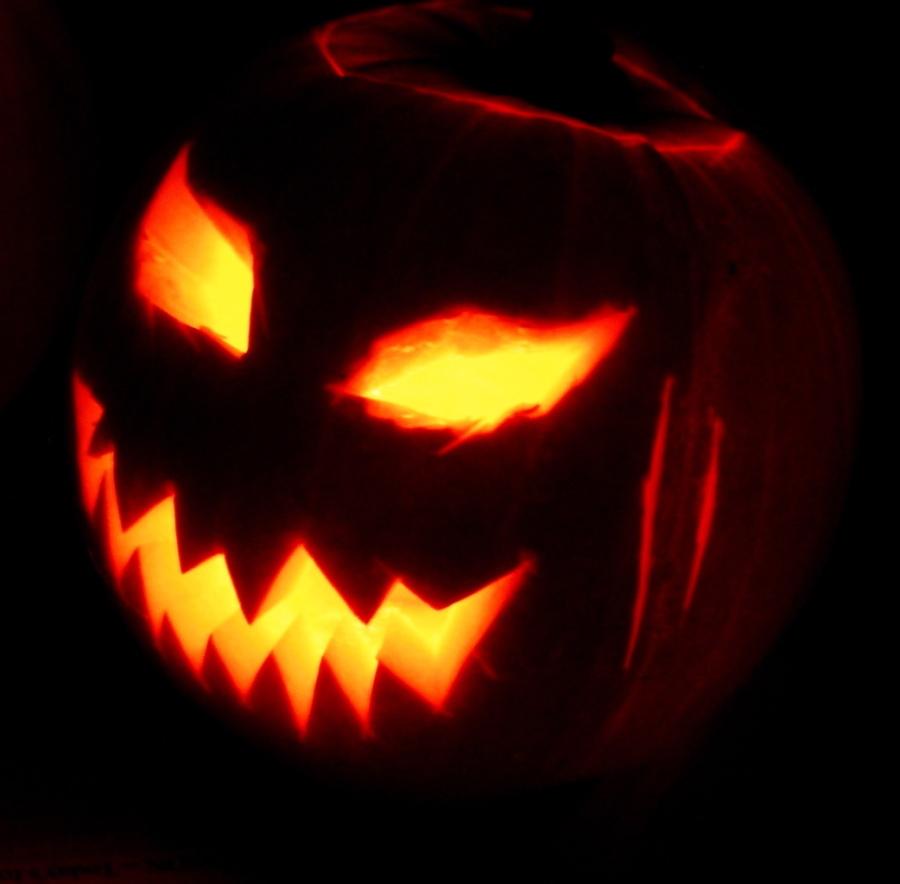Halloween origins
On Oct. 31, families from across the world will celebrate Halloween, a traditional holiday of timeless age. But how did it actually begin?
I decided to do some research on the origins of Halloween and found intriguing results. As with many modern holidays, it is a variation on ancient religious observances. The earliest known form of Halloween is the Celtic holy day of Samhain.
Samhain began at sunset on Oct. 31 and continued until the sunset of Nov. 1, representing the end of the harvest and beginning of winter. Due to the surrounding decay of fall, occult magics were most powerful, and the veil between the dead and the living was at its thinnest, allowing for spirits to roam the earth. This led to the date being associated with supernatural figures, such as witches, ghosts and vampires.
As part of the campaign by the Catholic Church to undermine native religions, in the seventh century CE Pope Boniface IV (608–615) established All Saints’ Day, or All Hallows, on May 13 as a replacement for the Roman festival of Lemuria. However, people still celebrated Samhain, so to further discourage paganism, All Hallow’s Day was moved to Nov 1. The day before it was therefore All Hallow’s Eve, or Halloween.
As with the name and the date, Halloween traditions are also modern interpretations of ancient practices.
The name Jack-o’-lantern was first used to describe the ignis fatuus, a phenomenon that usually occurs over swamps and marshes where a floating ball of fire will dance through the air and disappear. The origin of the practice, however, is largely unknown and debated. Although it is popularly stated that it is an ancient Irish custom, no accounts earlier than the 18th century mention them.
Trick-or-treating lies in three main traditions. First, during Samhain, peasants and beggars would go from door to door and beg for food, sometimes to collect for a community feast. Second, in reverence of the dead, families would often leave outside offerings of sweetmeat and cake. Third, people would often disguise themselves by dressing up in fanciful costumes so that demons and spirits wouldn’t recognize them. Together, these practices formed the trick-or-treating that children across the globe participate in today.
Interestingly enough, ancient Halloween traditions have not yet disappeared. The Celtic tradition of lighting a bonfire has persisted. In ancient times, the bonfire served to protect people from the night- it served as a second sun, and from its flame the hearths of all homes were relit. People would jump through this fire to purify themselves, and sometimes animals were also led through it. Some communities still light a bonfire on Halloween, and the tradition of jumping through the fire survives in Guy Fawkes day.
Samhain itself has not died either. Wiccans still celebrate it as a spiritual holiday, reflecting on the dead and performing seances.
Derek Yen is a senior and the Opinion Editor of Winged Post. Derek served as the STEM Editor of Aquila and Winged Post during his junior year and as a...


















![“[Building nerf blasters] became this outlet of creativity for me that hasn't been matched by anything else. The process [of] making a build complete to your desire is such a painstakingly difficult process, but I've had to learn from [the skills needed from] soldering to proper painting. There's so many different options for everything, if you think about it, it exists. The best part is [that] if it doesn't exist, you can build it yourself," Ishaan Parate said.](https://harkeraquila.com/wp-content/uploads/2022/08/DSC_8149-900x604.jpg)




![“When I came into high school, I was ready to be a follower. But DECA was a game changer for me. It helped me overcome my fear of public speaking, and it's played such a major role in who I've become today. To be able to successfully lead a chapter of 150 students, an officer team and be one of the upperclassmen I once really admired is something I'm [really] proud of,” Anvitha Tummala ('21) said.](https://harkeraquila.com/wp-content/uploads/2021/07/Screen-Shot-2021-07-25-at-9.50.05-AM-900x594.png)







![“I think getting up in the morning and having a sense of purpose [is exciting]. I think without a certain amount of drive, life is kind of obsolete and mundane, and I think having that every single day is what makes each day unique and kind of makes life exciting,” Neymika Jain (12) said.](https://harkeraquila.com/wp-content/uploads/2017/06/Screen-Shot-2017-06-03-at-4.54.16-PM.png)








![“My slogan is ‘slow feet, don’t eat, and I’m hungry.’ You need to run fast to get where you are–you aren't going to get those championships if you aren't fast,” Angel Cervantes (12) said. “I want to do well in school on my tests and in track and win championships for my team. I live by that, [and] I can do that anywhere: in the classroom or on the field.”](https://harkeraquila.com/wp-content/uploads/2018/06/DSC5146-900x601.jpg)
![“[Volleyball has] taught me how to fall correctly, and another thing it taught is that you don’t have to be the best at something to be good at it. If you just hit the ball in a smart way, then it still scores points and you’re good at it. You could be a background player and still make a much bigger impact on the team than you would think,” Anya Gert (’20) said.](https://harkeraquila.com/wp-content/uploads/2020/06/AnnaGert_JinTuan_HoHPhotoEdited-600x900.jpeg)

![“I'm not nearly there yet, but [my confidence has] definitely been getting better since I was pretty shy and timid coming into Harker my freshman year. I know that there's a lot of people that are really confident in what they do, and I really admire them. Everyone's so driven and that has really pushed me to kind of try to find my own place in high school and be more confident,” Alyssa Huang (’20) said.](https://harkeraquila.com/wp-content/uploads/2020/06/AlyssaHuang_EmilyChen_HoHPhoto-900x749.jpeg)



